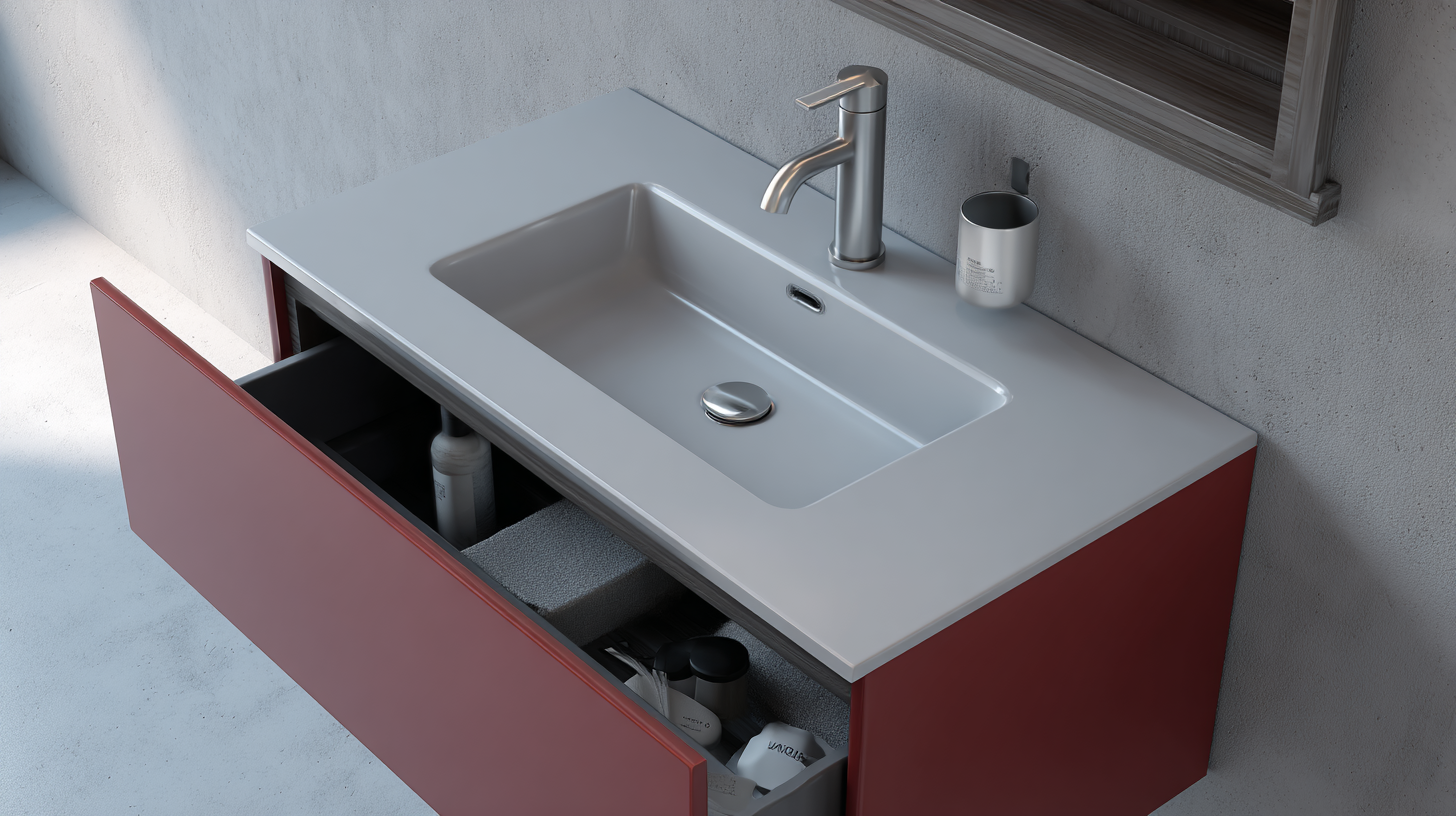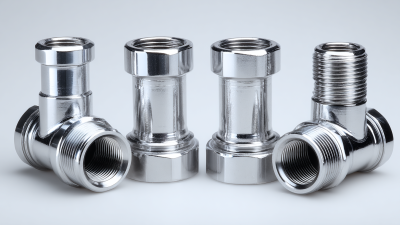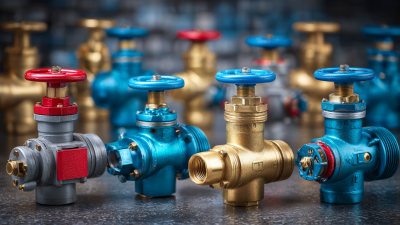Why You Need a Comprehensive Sanitary Fittings Catalog for Your Projects
 In the ever-evolving landscape of plumbing and construction, the importance of a comprehensive sanitary fittings catalog cannot be overstated. Renowned industry expert, Dr. Emily Johnson, once stated, "A well-organized catalog is not just a reference; it's a critical tool for ensuring project efficiency and success." She emphasizes that having immediate access to a complete range of sanitary fittings can significantly streamline the planning and execution phases of any project.
In the ever-evolving landscape of plumbing and construction, the importance of a comprehensive sanitary fittings catalog cannot be overstated. Renowned industry expert, Dr. Emily Johnson, once stated, "A well-organized catalog is not just a reference; it's a critical tool for ensuring project efficiency and success." She emphasizes that having immediate access to a complete range of sanitary fittings can significantly streamline the planning and execution phases of any project.
A sanitary fittings catalog serves as an essential resource for architects, contractors, and engineers alike, providing detailed information on various fittings that meet different specifications and building codes. The ability to compare options, visualize how components fit together, and understand their applications is crucial in making informed decisions. This resource not only aids in selecting the right products but also enables one to anticipate potential complications during installation, thereby minimizing costly delays and enhancing overall project outcomes.
Moreover, a comprehensive catalog fosters innovation, allowing professionals to explore new solutions and technologies that can improve efficiency and sustainability in their designs. As the industry continues to push towards smarter and greener building practices, staying updated with the latest offerings in a sanitary fittings catalog becomes increasingly vital. With the right information at hand, project teams can achieve their objectives while adhering to the highest standards of quality and safety.
The Importance of a Comprehensive Sanitary Fittings Catalog for Optimal Project Specifications
When embarking on a construction project, having a comprehensive sanitary fittings catalog is not just beneficial; it's essential for achieving optimal specifications. Such a catalog serves as a centralized resource that provides detailed information on various sanitary fixtures, including their dimensions, specifications, and installation guidelines. This critical information helps ensure that all elements work together seamlessly, minimizing the risk of mismatched components that can lead to costly delays and rework.
Tips: Always cross-reference your project requirements with the catalog to ensure compatibility with existing infrastructure. Utilizing a comprehensive catalog can also aid in selecting eco-friendly options that align with sustainability goals, which is increasingly important in modern construction.
Furthermore, a well-organized catalog can help streamline the procurement process. It allows project managers and contractors to easily source the right fittings, improving efficiency and reducing time spent on planning and purchasing. By leveraging the catalog's detailed information, teams can make informed decisions that align with budget constraints while meeting quality standards.
Tips: Regularly update your catalog to include the latest products and technologies. Keeping abreast of innovations in sanitary fittings can lead to better project outcomes and satisfied stakeholders.

How Detailed Catalogs Enhance Compliance with Industry Standards and Regulations
 Having a detailed sanitary fittings catalog is crucial for ensuring compliance with industry standards and regulations. Such catalogs not only provide a comprehensive list of available fittings but also include critical specifications, certifications, and guidelines that help professionals select the right products for their projects. Detailed catalogs can demystify complex regulations, making it easier for project managers and engineers to understand what is required to meet local codes and standards.
Having a detailed sanitary fittings catalog is crucial for ensuring compliance with industry standards and regulations. Such catalogs not only provide a comprehensive list of available fittings but also include critical specifications, certifications, and guidelines that help professionals select the right products for their projects. Detailed catalogs can demystify complex regulations, making it easier for project managers and engineers to understand what is required to meet local codes and standards.
Tip: When reviewing a catalog, pay attention to the certifications of each fitting. Ensure they meet relevant industry standards, such as NSF or ASME certifications, to guarantee safety and reliability.
Moreover, a well-structured catalog simplifies the decision-making process by presenting products in an organized manner. This allows teams to quickly reference necessary specifications, reducing the risk of costly mistakes that can arise from incorrect product selections. It also fosters better collaboration among team members, as they can easily share references and ensure everyone is on the same page regarding compliance needs.
Tip: Create a checklist from your catalog of essential fittings and their compliance requirements. This ensures that no detail is overlooked during project planning and implementation.
Evaluating the Cost Savings from Efficient Selection through Comprehensive Sanitary Fittings Catalogs
A comprehensive sanitary fittings catalog is an invaluable tool for any project manager or contractor seeking to optimize project efficiency and reduce costs. By consolidating various fittings and fixtures in one resource, it allows for quicker selection and procurement processes. This streamlined approach not only minimizes delays but also enables better comparison of prices and features among different brands, ensuring that the best choices are made without unnecessary expenditures.
**Tips:** When evaluating products in a sanitary fittings catalog, keep an eye on compatibility and sustainability. Choose fittings that not only match your current system but also contribute to long-term water and energy savings. Additionally, consider bulk purchasing options for significant items, which can lead to substantial cost savings on large projects.
Incorporating a comprehensive catalog into your workflow encourages informed decision-making. This leads to effective budgeting and resource allocation throughout the project lifecycle. By utilizing detailed product descriptions and specifications, you can accurately assess the long-term value of your investment in sanitary fittings, further reinforcing cost-saving strategies.
Key Features to Look for in Sanitary Fittings Catalogs for Project Success
When engaging in projects that require sanitary fittings, having a comprehensive catalog is essential. Such catalogs not only help streamline the selection process but also ensure that all necessary components meet the project’s specifications. Key features to look for include clear categorization of products, which allows for easy navigation through various fittings like faucets, pipes, and valves. A well-organized catalog should offer detailed descriptions and specifications for each item, including dimensions, materials, and compatibility information, which aids in making informed decisions.
Another important feature to consider is the inclusion of installation guidelines and maintenance tips. This information is crucial for ensuring that fittings are installed correctly and function optimally throughout their lifespan. Additionally, a good catalog should provide insight into industry standards and compliance certifications, ensuring that all products meet safety regulations. Furthermore, high-quality images and diagrams can greatly enhance understanding and assist in the proper installation or troubleshooting of the fittings, making the catalog not just a reference tool, but a vital component of project success.
Utilizing Data-Driven Insights from Fittings Catalogs to Improve Project Outcomes
In the realm of construction and plumbing projects, having access to a comprehensive sanitary fittings catalog can be a game changer. These catalogs not only provide extensive information about various fittings but also come equipped with data-driven insights that can significantly enhance project outcomes. By analyzing the specifications and performance metrics of different fittings, project managers can make informed decisions tailored to their unique requirements.
**Tip:** Always compare the durability and efficiency of fittings before making a purchase. Look for catalogs that include performance ratings and customer feedback, as these insights can guide you toward the most reliable options.
Moreover, leveraging data from fittings catalogs allows teams to optimize their workflows. By identifying trends in usage and installation, projects can be streamlined, reducing waste and improving timelines. Embracing these insights fosters innovation and leads to better compliance with industry standards.
**Tip:** Utilize digital tools that integrate these catalogs into your project management software. This facilitates quick access to essential information and ensures that your team is always on the same page regarding the materials being used.
Sanitary Fittings Usage Analysis
This chart illustrates the percentage usage of various types of sanitary fittings in projects, highlighting the importance of using a comprehensive catalog to make data-driven decisions and enhance project outcomes.
Related Posts
-

How to Choose the Right Sanitary Fittings for Your Plumbing Needs
-

7 Best Practices for Choosing Sanitary Pipe Fittings for Your Business
-

How to Choose the Best Fittings Sanitary for Your Plumbing Needs
-

How to Choose the Right Sanitary Fittings for Your Plumbing Needs
-

How to Choose the Right Sanitary Pipe Fittings for Your Plumbing Needs
-

The Ultimate Guide to Choosing the Right Ball Valves for Your Plumbing Projects